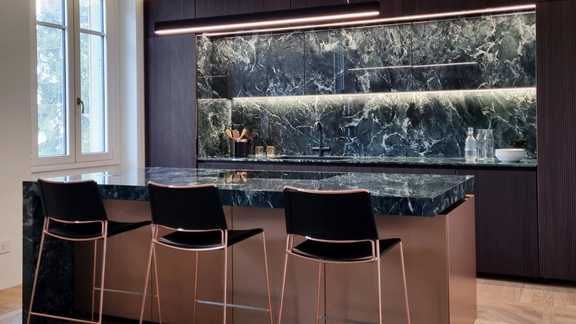

Elegance meets luxury in a marble kitchen. The shimmering surface in countless colours is characteristic. It shines in red, green, blue or silver and gives the precious natural stone its individual look: No two worktops or floors are the same. Choosing marble in the kitchen means opting for a unique design. What should you look out for in a marble worktop in the kitchen and how do you create an impressive marble look? We'll show you.
The term marble is derived from the ancient Greek "marmaros" for "shiny" - and this describes the properties of natural stone perfectly. It's not just the shiny surface that makes the material so desirable. Metal oxides such as graphite or chlorite give marble its unmistakable, individual colouring and grain. But to what extent is marble suitable for the kitchen?
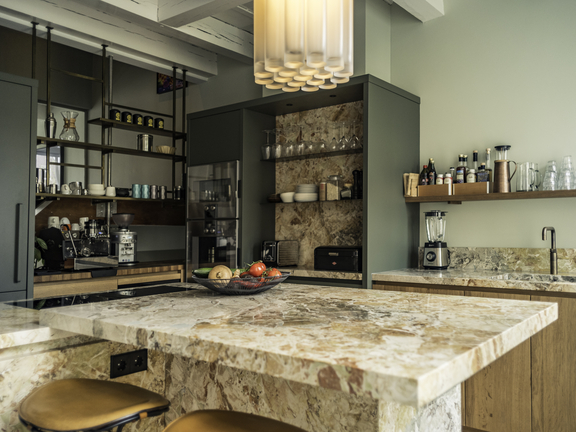
Natural stone has a number of impressive properties that make it the ideal material for kitchens. The smooth surface is pleasant to the touch, robust, practically everlasting and heat-resistant: You can safely place a hot pan on a marble worktop - at least for a short time. Caution is advised when exposed to high heat for long periods. It can lead to cracks and discolouration.
The question remains as to whether marble is hygienic - and it is. The material is insensitive to odours and free from harmful substances.
A marble worktop in the kitchen is a classic - and the natural stone also cuts a perfect figure in other areas:
The elegant eye-catcher gives every room a unique look. There are many reasons why marble is so popular in the kitchen. However, you should also be aware of the challenges posed by the material before making a purchase. What are the advantages and disadvantages of marble kitchen worktops?
| Advantages | Disadvantages |
|---|---|
|
|
|
|
|
|
|
|
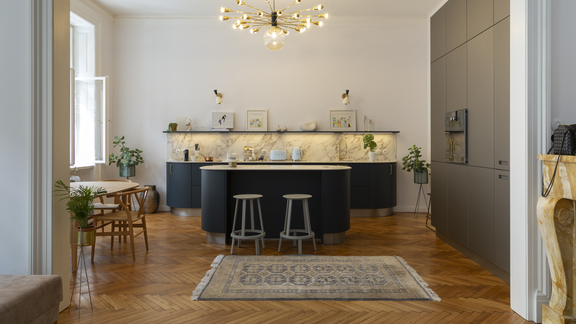
Sometimes in radiant yellow-gold, sometimes in mysterious shades of blue: The marbling, pleasant feel and functional properties make marble a favourite for kitchen design. How do you combine marble in the kitchen to create an impressive overall look? We have ideas for you.
Tip: Do you like trying out new looks? Transform your kitchen with marble foil. The temporary, easily removable solution gives cupboard doors, kitchen splashbacks or accessories such as memo boards a elegant twist in no time at all.
Bianco Carrara marble, also known as white marble, is adorned with fine dark grey to almost black marbling on a white background. Sometimes delicate and delicate, sometimes with striking drawings. How to combine white marble in the kitchen:
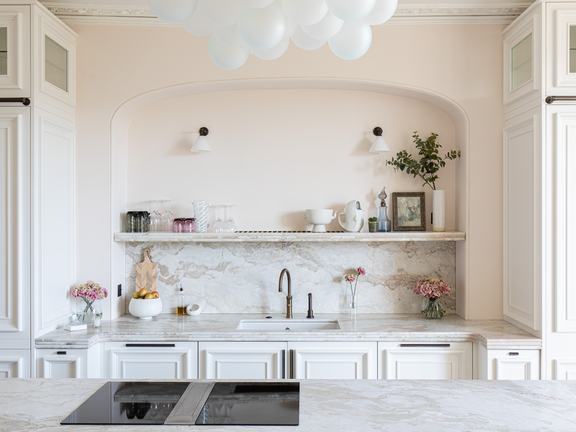
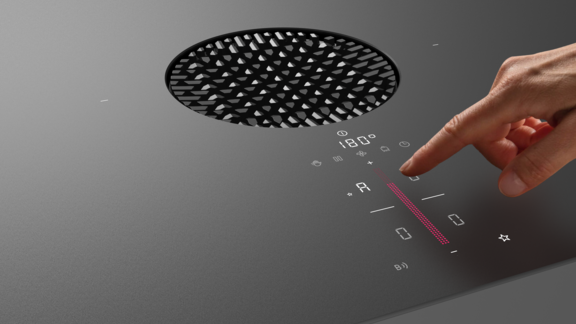
With the BORA X Pure Rough, matt glass ceramic meets a powerful cooktop extractor.
Black marble is rare and sought-after. Depending on the version, it has gold, silver, soft or dark grey highlights that give it an exquisite look. Black kitchens are synonymous with a stylish, modern aesthetic - and marble emphasises this effect.
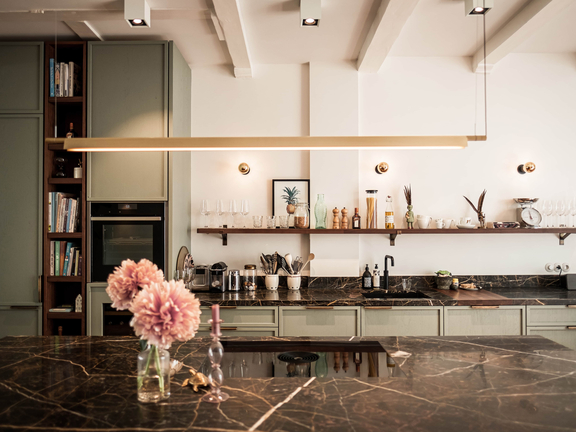
Create a glamorous cooking area with a black marble kitchen worktop and black high-gloss cabinets. The result is a seamless look that fits perfectly into modern living environments. Create visual depth with brass handles and copper accessories.
Cool elegance, warm natural material: When marble and wood come together in the kitchen, the result is a dream team. How about a kitchen unit made of warm oak wood with a worktop made of blue marble with silver veining? This creates a fresh, maritime effect. Or you can combine dark wood with white marble to create a cool monochrome style.
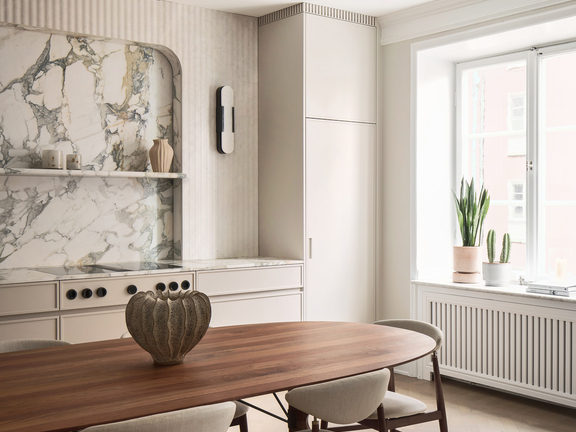
First impregnate, then enjoy: Marble requires a protective layer that protects the material from acids, liquids, scratches and wear. It must be renewed approximately every five years. This is what matters when it comes to care:
Use a slightly damp cloth for daily cleaning. Avoid drinking too much liquid.
Acidic cleaners are taboo. Use pH-neutral variants or natural stone cleaners.
Matt marble surfaces can be brought back to a high gloss with a special polish.